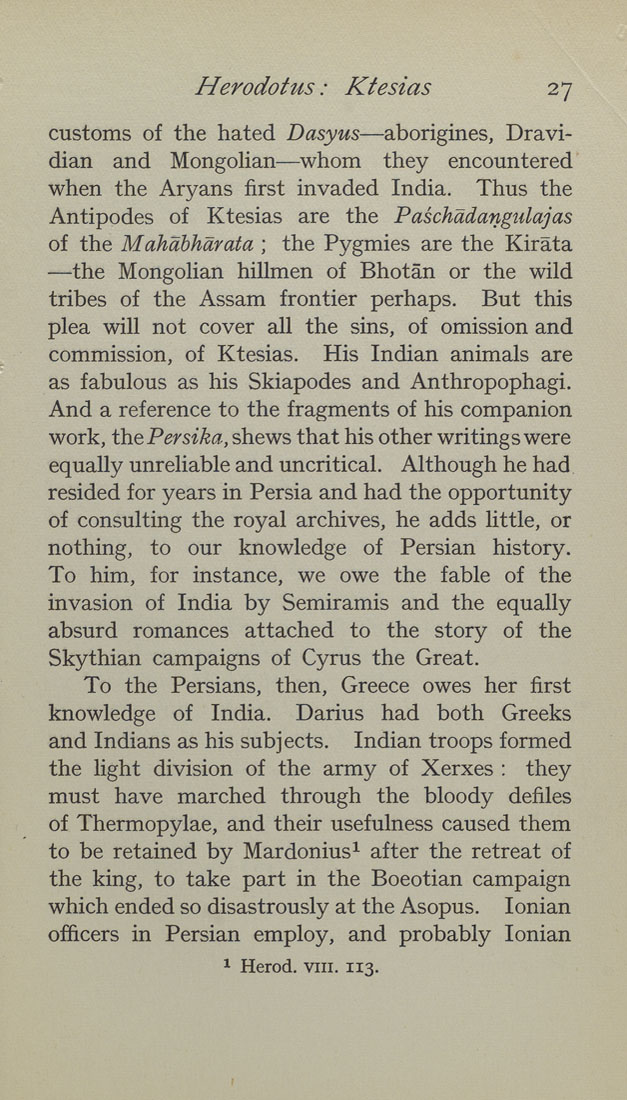Herodotus: Ktesias 27
customs of the hated Dasyus—aborigines, Dravi¬
dian and Mongolian—whom they encountered
when the Aryans first invaded India. Thus the
Antipodes of Ktesias are the Paschddangulajas
of the Mahdbhdrata ; the Pygmies are the Kirata
—the Mongolian hillmen of Bhotan or the wild
tribes of the Assam frontier perhaps. But this
plea will not cover all the sins, of omission and
commission, of Ktesias. His Indian animals are
as fabulous as his Skiapodes and Anthropophagi.
And a reference to the fragments of his companion
work, the Persika, shews that his other writings were
equally unreliable and uncritical. Although he had
resided for years in Persia and had the opportunity
of consulting the royal archives, he adds little, or
nothing, to our knowledge of Persian history.
To him, for instance, we owe the fable of the
invasion of India by Semiramis and the equally
absurd romances attached to the story of the
Skythian campaigns of Cyrus the Great.
To the Persians, then, Greece owes her first
knowledge of India. Darius had both Greeks
and Indians as his subjects. Indian troops formed
the light division of the army of Xerxes : they
must have marched through the bloody defiles
of Thermopylae, and their usefulness caused them
to be retained by Mardonius^ after the retreat of
the king, to take part in the Boeotian campaign
which ended so disastrously at the Asopus. Ionian
officers in Persian employ, and probably Ionian
1 Herod, viii. 113.
|








